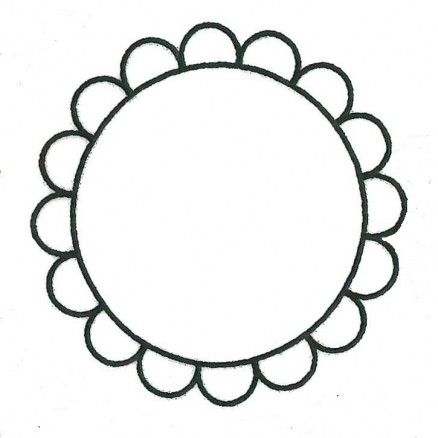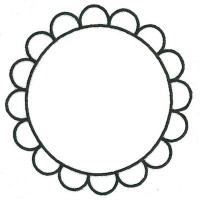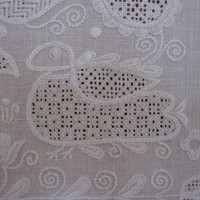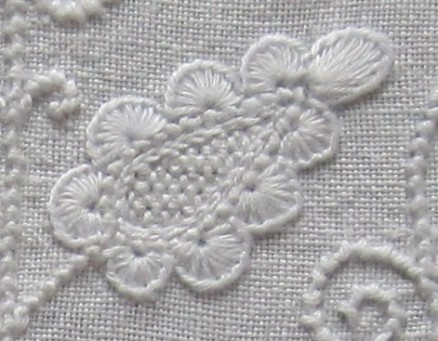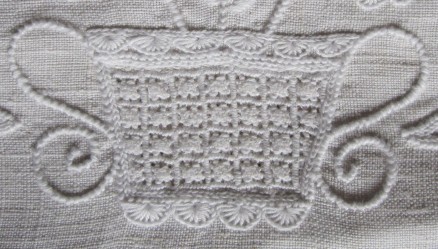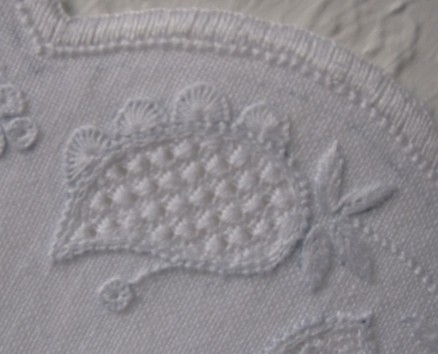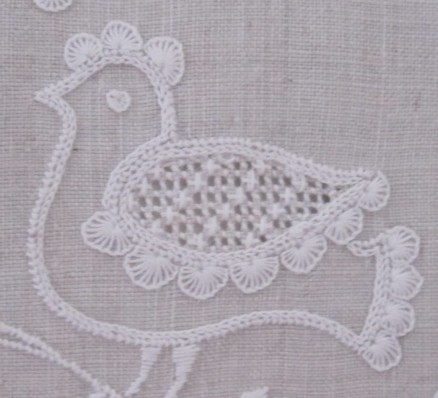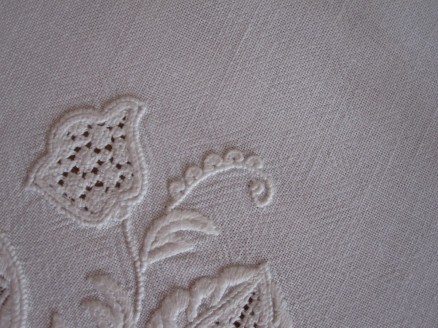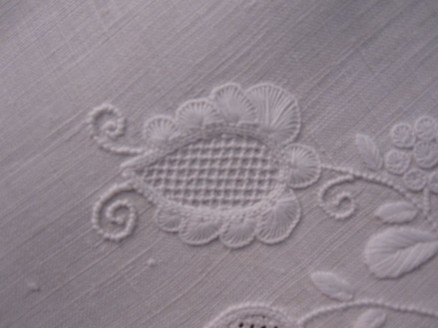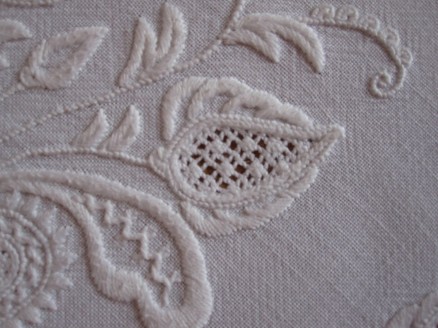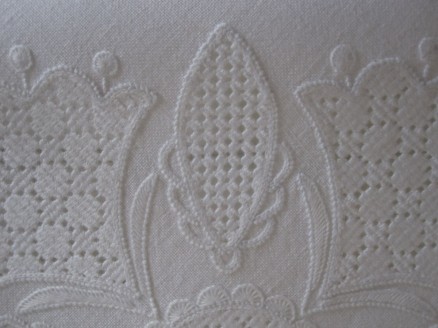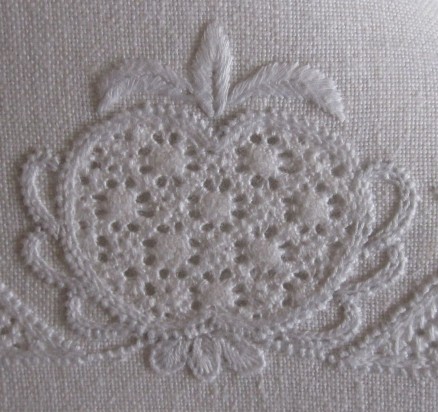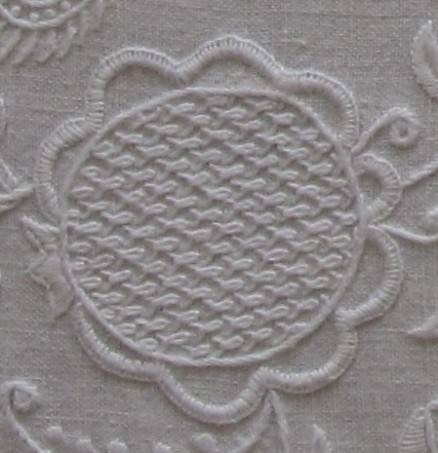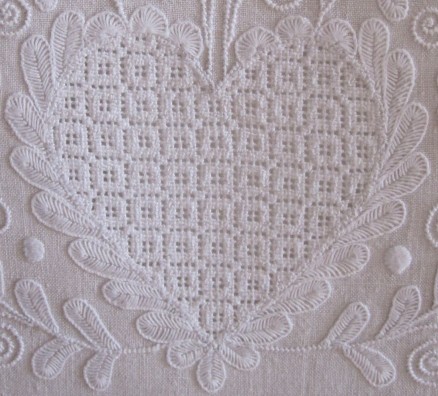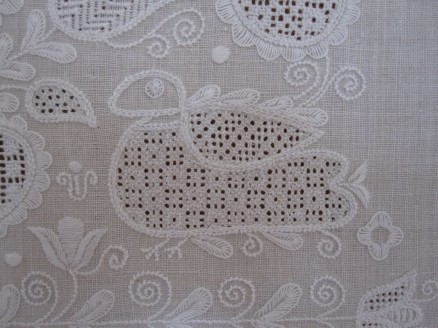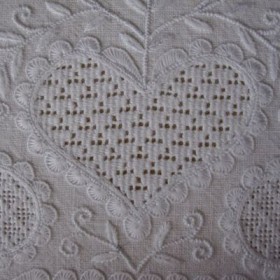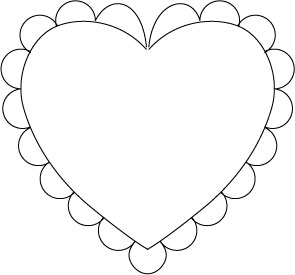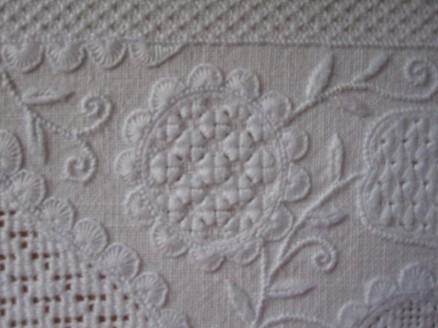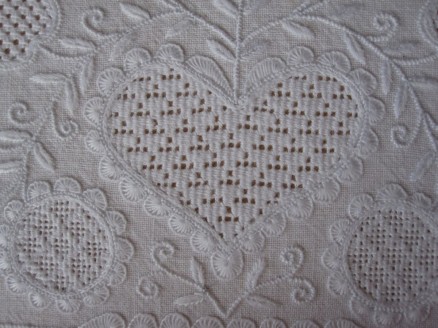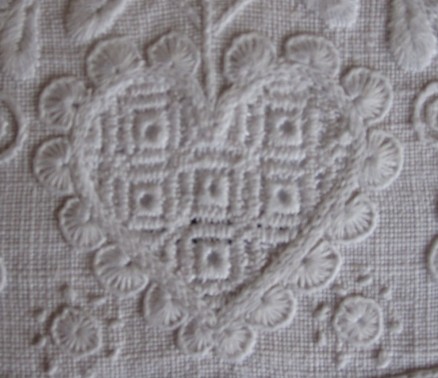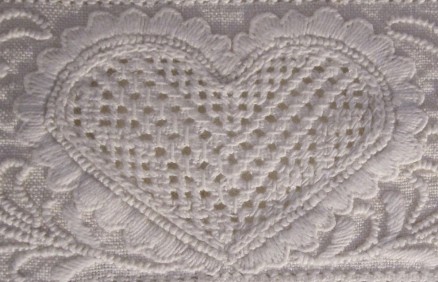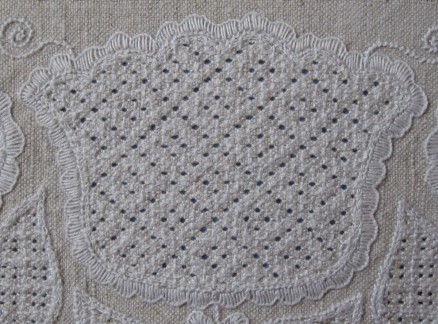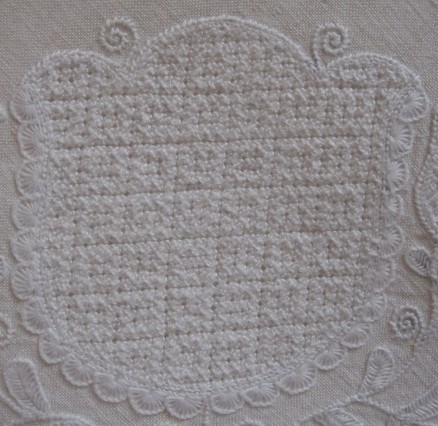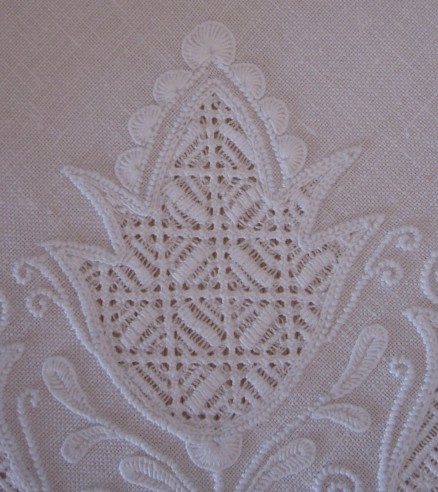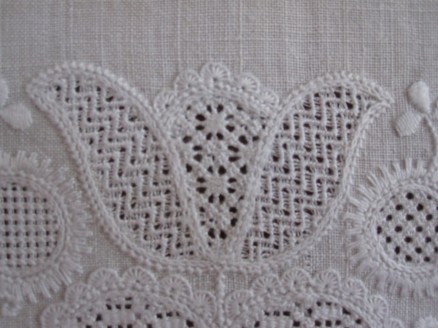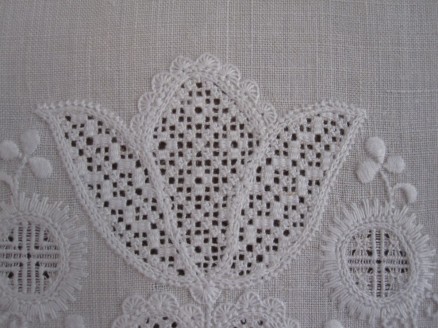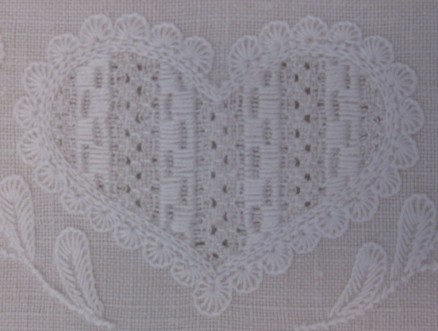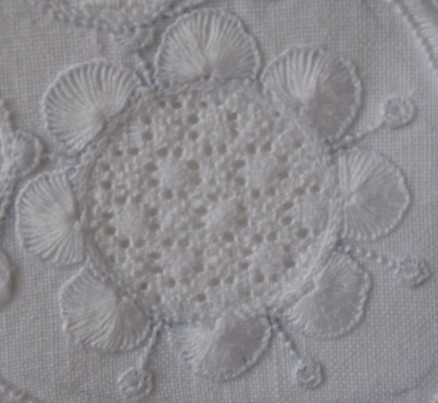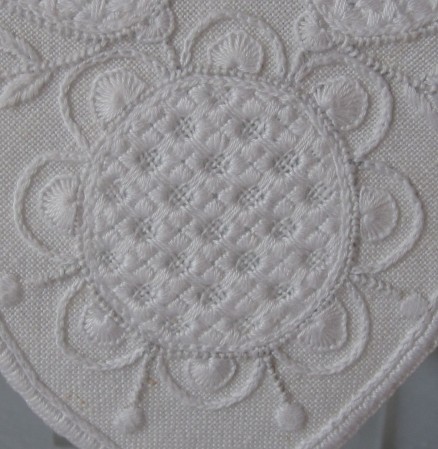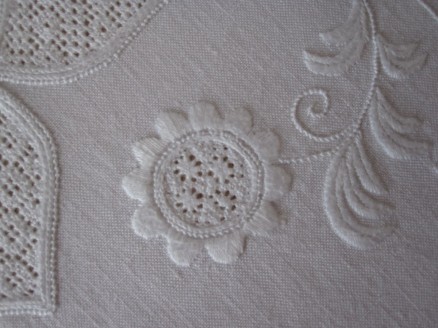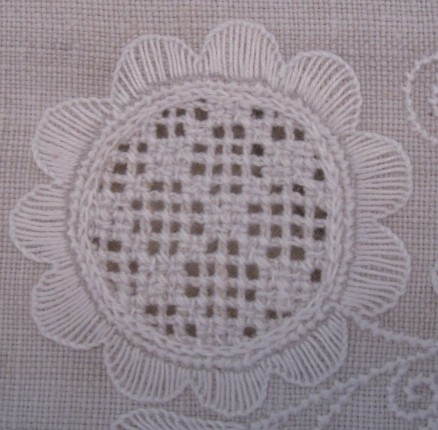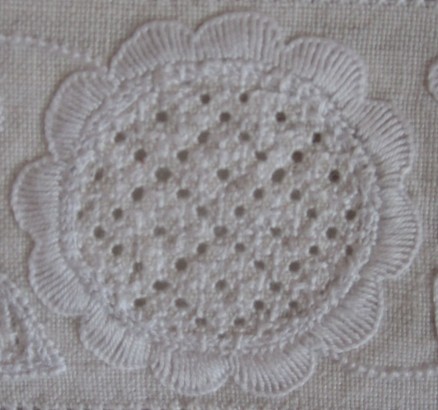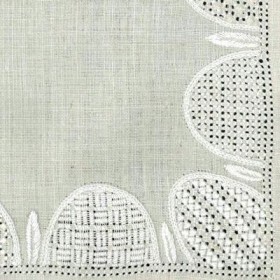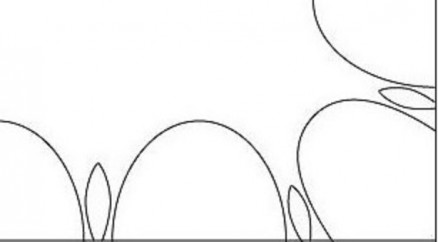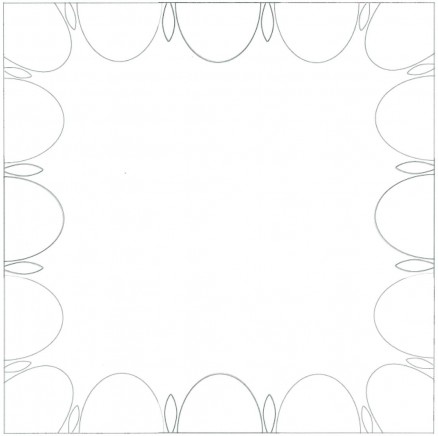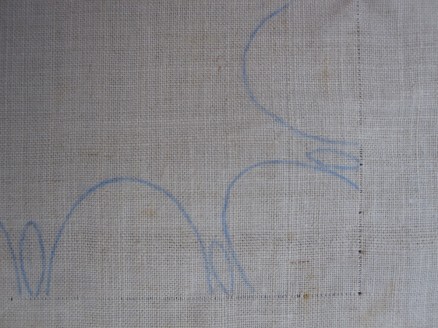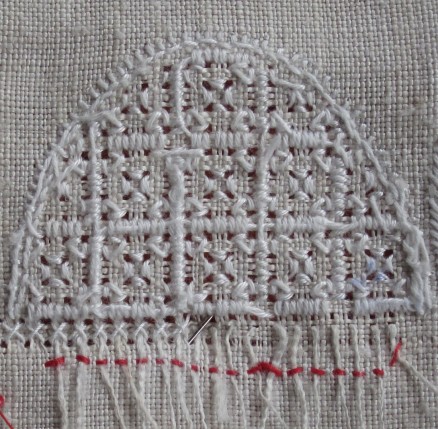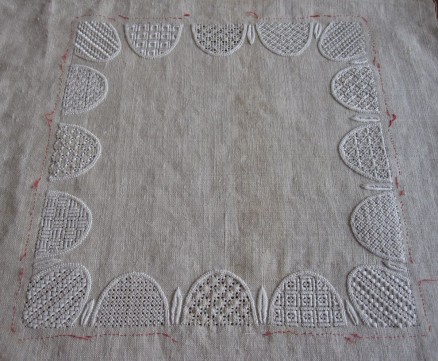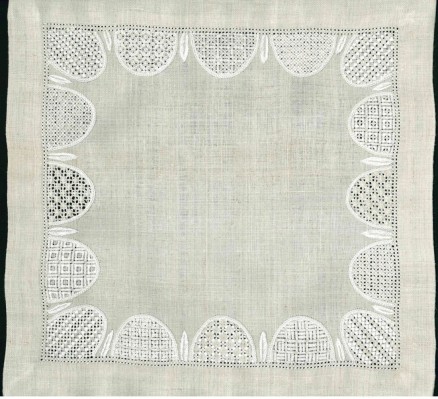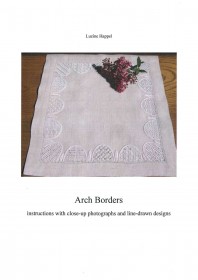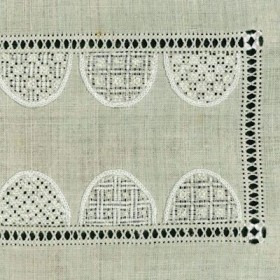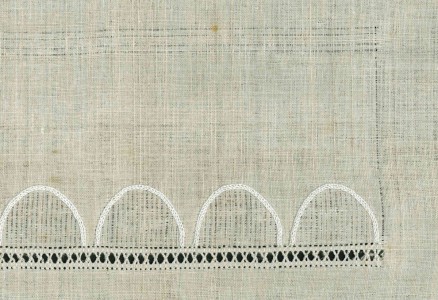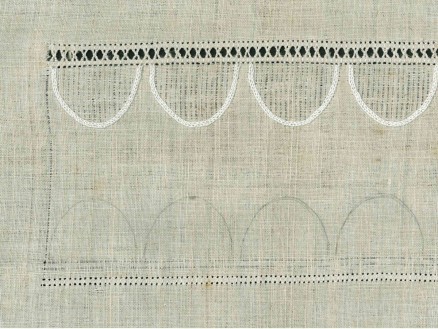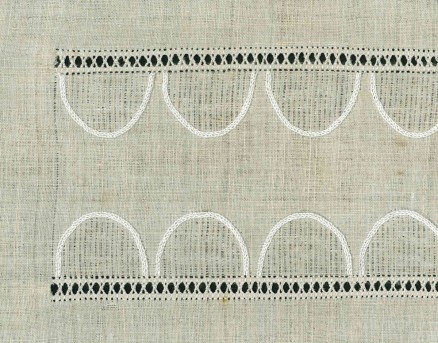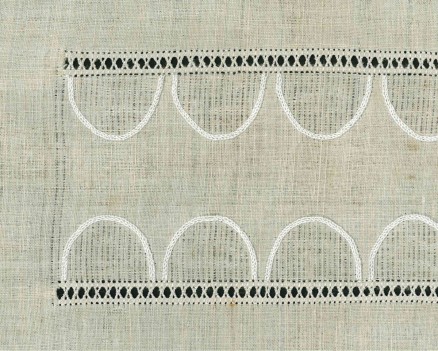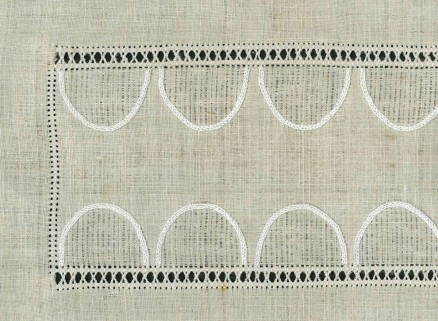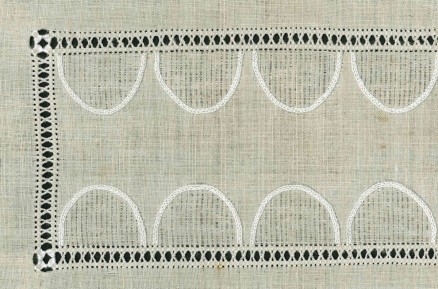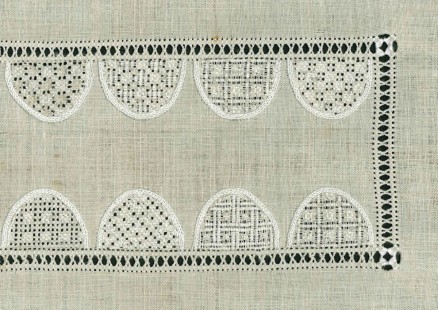As already mentioned in the article Schwalm Designs (2) – Scallops (1), it is customary to decorate simple Schwalm motifs by outlining the shapes with scallops placed close together.
But how can one get uniformly sized and evenly distributed scallops around the edges of a shape if a computer drawing program is not available?
It’s easy to do on motifs that are not completely outlined with scallops. For an example, I will describe the process for adding scallops to a heart shape.
Supplies needed: a stencil for the motif, tracing paper, a sharp pencil – a mechanical pencil is best – a circles template and an eraser.
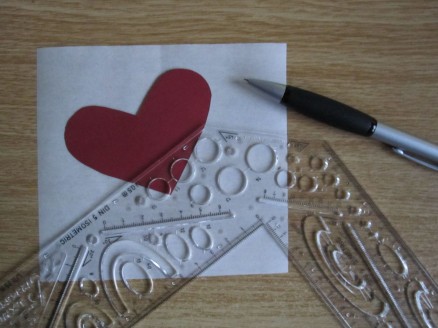 Using the stencil a heart shape is drawn on the paper. On the template, a circle of a proportionate size is chosen to draw a scallop at the heart’s lower point. This point should either match the center of the circle or should be placed slightly above the center of the circle.
Using the stencil a heart shape is drawn on the paper. On the template, a circle of a proportionate size is chosen to draw a scallop at the heart’s lower point. This point should either match the center of the circle or should be placed slightly above the center of the circle.
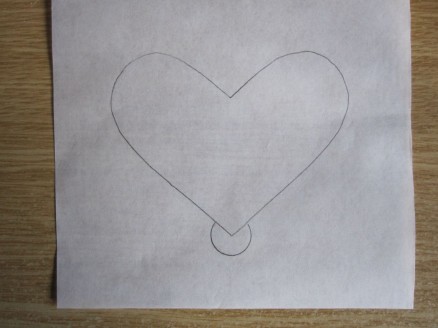 Using the same circle template, additional scallops are drawn next to it.
Using the same circle template, additional scallops are drawn next to it.
Each circle stencil has four marks (→).
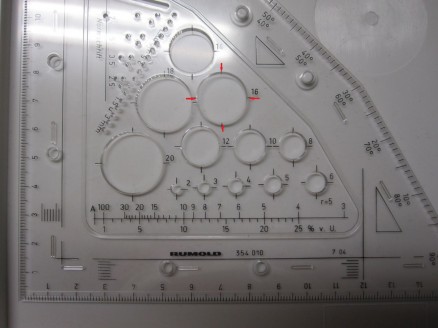 Two opposite marks should match the outline of the heart.
Two opposite marks should match the outline of the heart.
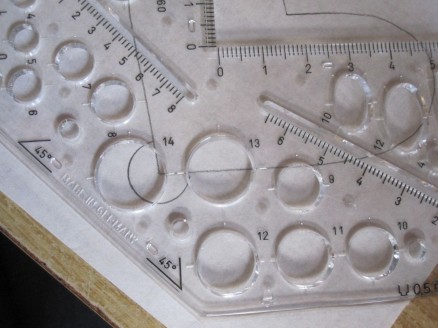 In this way the semi-circles makes scallops.
In this way the semi-circles makes scallops.
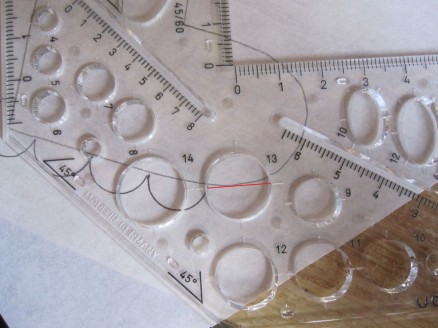 If the outline is curved, the template has to be positioned as shown in the picture above. The center of the circle (the diameter of the circle is marked in red as a visual aid) meets the outline of the motif. If care is not taken when placing scallops on a curve, the scallops could get distorted.
If the outline is curved, the template has to be positioned as shown in the picture above. The center of the circle (the diameter of the circle is marked in red as a visual aid) meets the outline of the motif. If care is not taken when placing scallops on a curve, the scallops could get distorted.
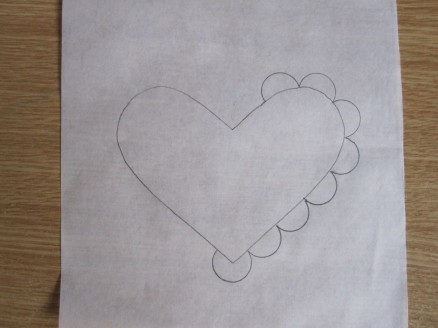 Reaching the top of the heart, either the scallop line ends before the center point – leaving a small distance free between the last scallop and the hearts upper point
Reaching the top of the heart, either the scallop line ends before the center point – leaving a small distance free between the last scallop and the hearts upper point
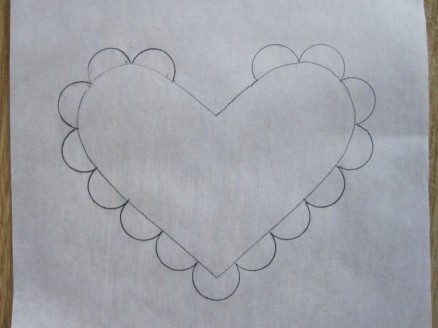 or the last scallops (on both sides of the concave point) are slanted a little so to be able to fit down into the concave point.
or the last scallops (on both sides of the concave point) are slanted a little so to be able to fit down into the concave point.
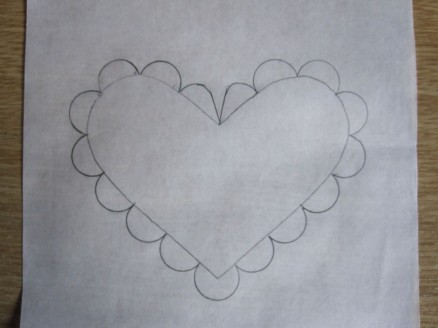 It is more difficult to embellish circles with scallops. It is possible to calculate it using geometry, but this is too complicated for an embroiderer.
It is more difficult to embellish circles with scallops. It is possible to calculate it using geometry, but this is too complicated for an embroiderer.
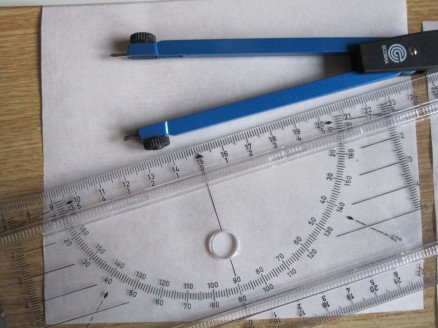 So one could utilize either paper, a pair of compasses and a protractor,
So one could utilize either paper, a pair of compasses and a protractor,
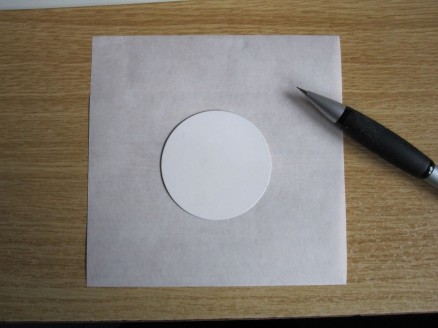 or tracing paper, a stencil of the shape and a pencil.
or tracing paper, a stencil of the shape and a pencil.
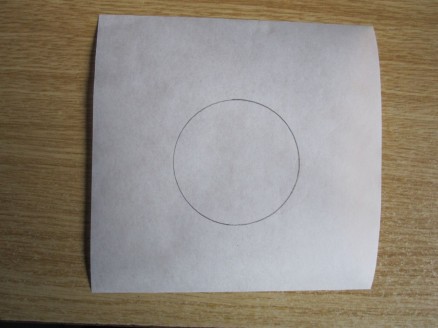 A circle is drawn on the paper
A circle is drawn on the paper
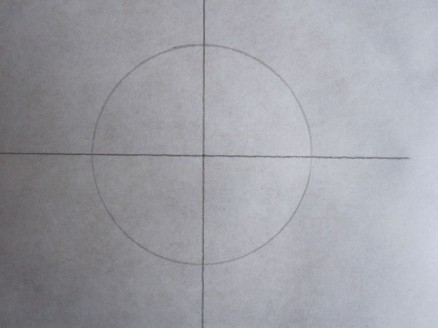 and divided into quarters using the protractor or
and divided into quarters using the protractor or
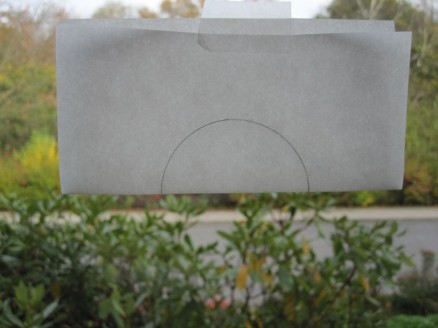 by folding. The slightly transparent paper is held against a window or other light source. It is folded – so that lines match – first in half
by folding. The slightly transparent paper is held against a window or other light source. It is folded – so that lines match – first in half
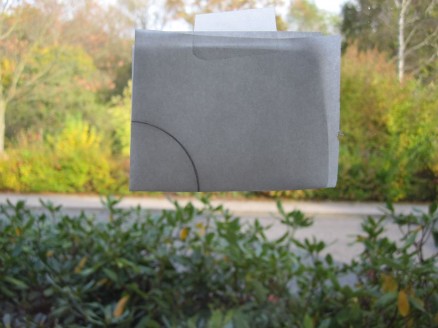 and then into quarters.
and then into quarters.
From the template, a circle of a proportionate size is chosen to draw scallops along the outline of the shape. For my circle, I started with a 13 mm diameter circle from the template – three scallops did not exactly fill the quarter.
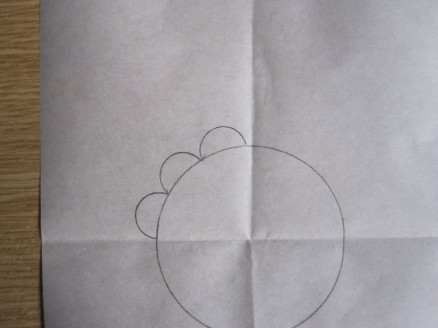 So, I tried a 14 mm circle; three scallops fit in the quarter exactly.
So, I tried a 14 mm circle; three scallops fit in the quarter exactly.
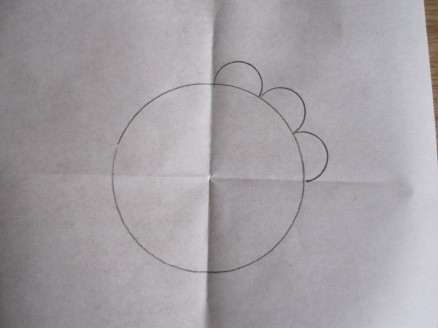 To facilitate getting the scallops the same height, an additional marking line can be drawn with a pair of compasses.
To facilitate getting the scallops the same height, an additional marking line can be drawn with a pair of compasses.
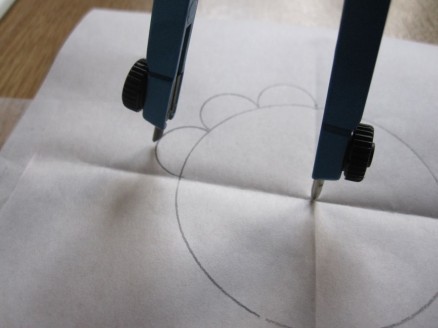 Such a line eases the work enormously.
Such a line eases the work enormously.
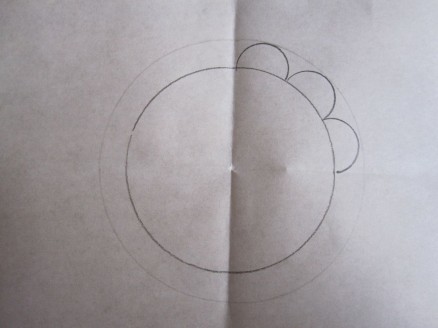 Proceeding carefully, in the end the scallops meet exactly.
Proceeding carefully, in the end the scallops meet exactly.
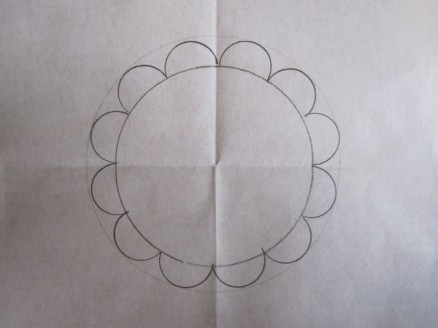 To ease the work on larger shapes, the circle should be divided once more – into eighths.
To ease the work on larger shapes, the circle should be divided once more – into eighths.
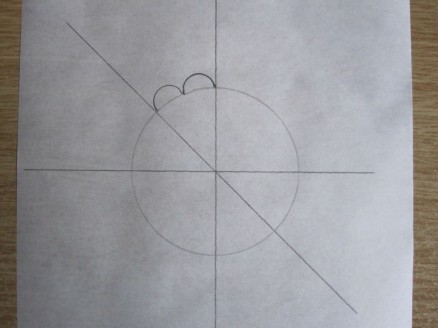 Again, drawing an additional outer circle (for scallop height) will further aid you in drawing perfect scallops.
Again, drawing an additional outer circle (for scallop height) will further aid you in drawing perfect scallops.
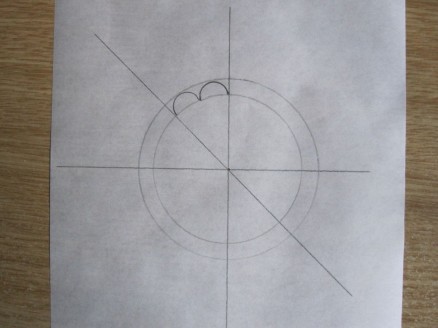 In the end, uniform and evenly distributed scallops outline the circle.
In the end, uniform and evenly distributed scallops outline the circle.
